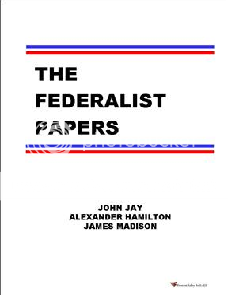PDF –> reviewofthe2016electionpart3polling
All the major polling organizations were pretty certain the Mrs. Clinton would easily defeat Mr. Trump for the Presidency. How did it happen that these organizations, with a long history of reasonably accurate predictions and sophisticated techniques, got it wrong this time? It seems a variety of forces were at work.
First, Mr. Trump did not pursue a traditional campaign. Rather than coordinate and consolidate support among the traditional Republican operatives and organizations, he preferred to take his populist message directly to the public, mostly by “social media”. This reduced the ability of the media outlets from filtering his message in favor of their candidate, Mrs. Clinton. Secondly, the public in general had had enough of “politics as usual”; after the slow recovery during the past eight years, and believing that the nation was fundamentally on the wrong path, the voters were receptive to a candidate who offered a change from Mr. Obama’s policies. But how did this affect the accuracy of polling? It affected it because the polling organizations relied on past formulas and past assumptions; unable or unwilling to treat Mr. Trump as a viable candidate with a message appealing to voters in general.
One thing to remember about polling: it is not entirely random. The polling organizations do not make phone calls to voters by dialing a random series of seven digits within each of the U. S. area codes, and asking questions of any voter who answers. Every phone call made by a polling organization is made to a person whose characteristics are already known: age, race, sex, economic background, political preferences and religious affiliations. The more sophisticated organizations probably also know even more: what clubs the target belongs to, what newspapers and magazines they read, and how much they give to charities and political actions committees. Each potential respondent is grouped in with other like respondents, and in accordance with “identity politics”, a certain number of each targeted group is randomly polled in order to gauge that particular group’s opinions. In that sense, each respondent is chosen randomly; but the choice of which groups to poll, and how to weight them, is not random at all.
There are two kinds of political polls: a) the ones intended to show the public that a particular position taken by a candidate is supported by a majority of voters; and b) the ones taken for the purpose of testing how well a certain message or position is received. The first type may be considered “fixed”: the outcome is determined beforehand, and the polling organization chooses which of the aforementioned groups favor it, then randomly poll a sample among those groups to imply widespread support. No one believes a poll with 100% favoring anything, so of course the poll is designed to obtain a reasonably believable number of dissenting views. A typical example is the “debate” on man-made climate change: the pool of respondents is largely limited to those groups known to favor restrictions on industry. Surprise, surprise, surprise: the general public (so they can now claim) believes that mankind is a virus and is responsible for changing the climate in negative ways. Never mind that the climate has been changing every day for the past five billion years.
The first type is good old-fashioned deceptive advertising; the second type of polling is actually more dangerous. The polls taken to test the politicians messaging is not intended to gauge public sentiment: its real goal is to help the politician evaluate and fine-tune their message. This includes uncovering the best way to camouflage their true position such that the voter is conned into voting for a candidate or initiative that is the opposite of what he actually prefers. These polls are not fixed: they are the way that pollsters help politicians tailor their lies to maximize the benefit for every dollar of advertising spent.
In regard to the 2016 election, the polling organizations failed on both categories of polls. In the first type, they relied on previous history on how to weight the groups that they polled. It is also possible that they ignored certain groups that were in fact favorably disposed to Mr. Trump’s message. They failed also on the second type of polling because Mr. Trump was immune to it: he did most of his own messaging without focus groups or elegant filtering. The fact that he was successful in doing so should have informed the polling organizations that no amount of fine tuning by the other Republicans (in the primaries) or by Mrs. Clinton (in the general) would matter when the voting public preferred someone who simply said what he thought. The change in style was too radical for the polling organizations to develop a suitable countermeasure. Rest assured however, these mistakes will not be repeated. The polling organizations are hard at work to refine their methods such they can react to future candidates like Mr. Trump.
I actually was targeted on 4 Nov 2016 as to my preferences for President. Of course, I likely was chosen as described above, not purely at random. Before the nice lady could proceed to ask her questions, I interrupted and told her that polls were fixed, and I would not be a part of it. I told her to make up whatever answer would help her obtain the desired result. Then I hung up on her. I truly believe that no responsible voter should ever respond to an opinion poll. Let them find out on Election Day.



